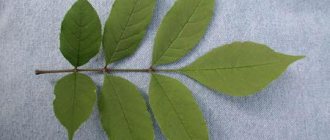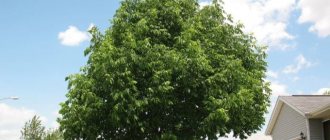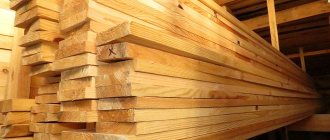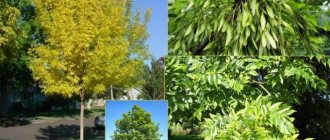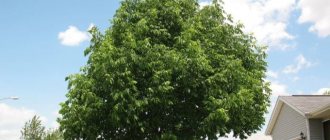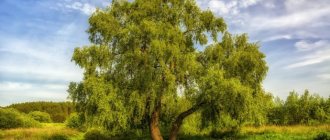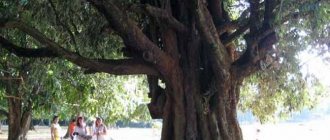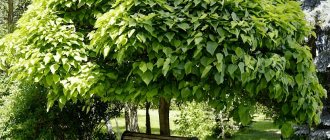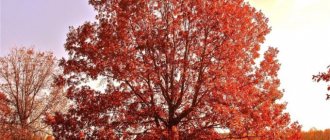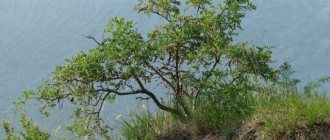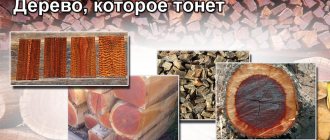Ash trees from the olive family of plants, including golden forsythia, fragrant jasmines, lilacs and the evergreen olive itself, can always be seen near the homes of villagers. In modern landscape designs in the garden plots of urban settlements, living ash plantings are also actively used.
Now the popularity of the plant has again increased among lovers of deciduous non-fruit trees. Many people are interested in what is made from ash, why is this type needed in the garden or near the gate of the house.
Since ancient times, its wood has been used in farming and crafts were made from it. Doctors prepared the bark, buds and leaves for decoctions and infusions, which they used to rub joints and bones for rheumatism and aches. Beekeepers made cylindrical hives for bees from the bark of mature and large trees. Such bodies are still made by folk craftsmen. They sew together layers of bark with thin strips of the same bark, attach a lid on top, and a bottom on the bottom. Then such small hives are tied in the forest or groves near buckwheat fields or sunflower plantings. We will tell you about the varieties of the crop, what an ash tree looks like, give a description of some species, advise how and where it is best to plant sprouts, and how to care for them.
Description of ash tree
The tree grows in neutral soils or those containing a small amount of alkali. In this case, the substrate must be fertile and moist. Typically, loam or black soil has the necessary properties. The ash tree can grow in a group or stand alone. Ash trees can often be seen growing in recreation parks, forests, and clearings near rivers and lakes. The plant prefers sunny areas.
It is also unusual that ash does not have a tap root, but a fibrous root system that grows in breadth and not in depth. The bark on the tree trunk, depending on the species, is gray-green to silver. There are no bark breaks or cracks on the trunk. This feature protects the ash tree from pest damage.
The tree grows up to 30 meters in height, but can stretch up to 50 meters. With development and growth, it forms an ovoid crown with arched drooping shoots. The leaf blade is a dark green emerald hue.
Ash blooms in the spring months with flowers of brown, yellow or purple shades. One tree can have both male and female, bisexual flowers. The plant is poorly pollinated because it does not have a pronounced aroma that attracts insects, and male flowers bloom later than female ones.
In nature, flowers are pollinated if several trees stand nearby. Another feature: ash leaves do not turn yellow. They fall to the ground without changing color.
On ash trees, round seeds ripen in the fall, about four centimeters in diameter. They don't fall off until winter. Inside the seeds are nuts. In some ash trees they are edible and are used for pickling, making seasonings, and added to dishes.
The slender trunk usually has a girth of no more than 100 centimeters. The life cycle of the plant is about one hundred years. The first fruits on the ash tree appear 25 years after planting. The plants are frost-resistant, but they can be damaged by sudden frosts, especially if there is no snow.
Types of culture
In gardening ensembles and landscape designs you can find plants:
- monumental - they amaze with their pyramidal crown;
- weeping - with the presence of hanging fluffy branches right down to the ground;
- horizontal - they have widely spread branches, some of which are weeping;
- low spherical - for decorative design.
Let's look at the most popular types of crops:
Common ash (photo)
The forms of this type are decorative. They reach 30-40 m, and are especially tall on fertile soils. The crown can be high and openwork. The young bark of the tree is smooth gray-green in color; with age it becomes gray and covered with cracks. Black velvety buds open into odd-pinnate small lanceolate leaves - up to 7-15 pieces, serrated along the edge and sessile. They are bright green above and light green below.
Where does the tree grow
This plant is often used to decorate the landscape because it looks spectacular in summer and winter. This plant is widespread throughout our country, including being planted in gardens. Typically, gardeners tend to purchase seedlings from nurseries. It is more difficult to grow an adult tree from seeds. People are especially attracted to the sight of ash trees in autumn.
Many species of this plant grow under natural conditions. Depending on the variety, the growing area also changes.
Ash can be seen in the middle zone, in the southern regions, in European countries. According to legends and myths, you can read that the tree grew in the territory of Rome and in the Scandinavian countries. The tree also grew in America, but was not as widespread. Migrant settlers from Europe took planting material with them from here and, on the contrary, brought their own seeds.
In Russia, this tree can often be found in the forest, but recently it has often been planted in alleys, parks, at the entrances to houses, and on memorial complexes.
Ash varieties
Depending on natural conditions, types of ash trees may vary. Tall, Manchurian, curved-fruited ash grows on the territory of our country.
Ordinary
Growing area: Western and Central Europe, in the temperate climate zone of Russia. It is possible to find tall ash trees in Iran or the Caucasus. It usually grows in the forest, but can be planted in city parks and squares. It can grow up to 30–40 meters, and its leaf reaches forty centimeters and consists of several leaf plates. Flowers bloom on the tree in April before the leaves come out.
American
It can be found in eastern North America. It differs from the ordinary type of tree in having an expanded leaf and a short plate. The edge of the leaf is framed with teeth. The tree has a wide crown with light green leaves. The trunk has a lighter bark with a silvery tint.
Downy (Pennsylvania) Ash
This culture is not afraid of cold and prefers a large amount of moisture. The tree does not grow as tall as the others. Its average height reaches 20 meters. Fluffy ash prefers to grow in a brightly lit area; it does not tolerate shade. In a shaded area, the plant quickly dies. Its young branches are framed with down, the back side of the leaf blade is also pubescent. Leaf color: dark green. The trunk has brown-brown bark. This plant is long-lived. It lives up to 350 years.
Manchurian ash
Under natural conditions, it grows in eastern Russia, China, and Japan. This is a tall plant, reaching a height of 40 meters and a trunk girth of up to two meters. Chinese ash is distinguished by its large leaf blades. It has a thick grey-green bark.
Black
Feature of the variety: does not bloom. Black ash grows in the United States, in swamps and near water bodies. The trunk has almost black bark. This culture loves moisture very much and suffers from its deficiency.
Distribution and ecology [ edit | edit code ]
The homeland of Manchurian ash is Manchuria, China, the Korean Peninsula, and Japan.
In Russia, it is found in the Primorsky and Khabarovsk Territories, the Amur Region, on Sakhalin Island and Kunashir Island. It grows in deciduous and mixed forests; it rarely forms pure stands. Together with Maksimovich poplar and Japanese elm and other species, it forms a formation: elm-ash (urem) forests.
It rises along slopes up to 700-800 m above sea level.
Used in landscaping the city of Vladivostok.
Application of the plant
The tree is used to make dyes, sports equipment and weapons. Medicines and furniture are made from parts of the plant.
Furniture makers value it for its strength and low number of splinters, but at the same time its wood is quickly susceptible to rot and pests. To preserve its qualities, it is necessary to treat the material with antiseptic compounds.
The fibrous root system is widely used for handicrafts and crafts, for making interior items and decorations. The fruits of the plant can be pickled, seasoned with meat, added to salads and spicy mixtures. They are collected from ash trees in the fall after ripening.
It is used for attacks of radiculitis and for the treatment of wound surfaces. To relieve inflammation from the wound and make it heal faster, it is recommended to make bandages from chopped ash bark and leaves. A decoction of tree leaves helps with radiculitis and bronchitis. A tincture of ash roots is used to restore immunity.
Growing a tree on the site
The tree is well suited for creating a landscape composition due to its height and decorativeness. The variety of plant depends on the purpose for which a person plans to plant it.
Tall types are relevant when it is decided to plant a single plant, and low, horizontal or spherical types are suitable for hedges. Species with curved branches, like those of a willow, look unusual.
Place and soil for the plant
The seedling needs a flat place without shade. But at the same time, the soil here should be moist, but not swampy. The plant can tolerate drought for some time, but most varieties like moisture. Ash is considered a frost-resistant crop.
The development of a tree depends on whether the seedling is planted correctly. It is not recommended to plant the plant in saline soil; it is better to plant it in soil with an abundance of calcium. The acidity of the soil should be low.
Planting process
When purchasing planting material, you need to ensure that its roots are not exposed. It is better if they are packaged and do not dry out or are in a container.
Before planting, you need to soak the roots, saturating them with moisture. The hole for planting should be one third larger than the earthen ball of the seedling. A drainage of pebbles, coarse sand or crushed stone is laid at the bottom of the hole. The drainage layer makes up approximately ¼ of the total volume of the hole.
With proper drainage, the substrate will dry evenly. The soil in the hole will not be compacted and become salty. The drainage layer will remove moisture from the roots, so they will not rot and sour in the ground.
It is better to prepare the soil for the hole yourself, taking part of the sand and twice as much humus. It is possible to plant a tree in the following soil: sand, humus, leaf soil in a ratio of 1:2:1. The area near the trunk must be mulched with peat or wood chips up to 15 centimeters high.
Care
After planting, the ash tree should be watered regularly for the first 3–4 days. Weeding is carried out as the area with the plant becomes overgrown. The soil should be enriched in the first and last months of spring with compounds containing nitrogen. When autumn comes, you can feed the tree with universal fertilizer or nitroammophos.
In winter, the trunk should be covered with burlap. This should be done for seedlings up to three years old. When planting, the root system is planted 10–20 centimeters above the horizon. The soil will sag over time under the weight of the plant.
The tree should be watered during heat and drought, because the plant's root system can draw water from deep layers of the soil. If you flood the plant, the green ash may begin to rot. If this starts, you need to start pruning the affected branches. Diseased sections are sprinkled with crushed activated carbon. The regularity of watering varies.
Don't plant trees too close. The interval between trees should be at least five meters from each other. Otherwise, the plantings become too dense, they interfere with each other, and a shadow is formed.
Pests and diseases
Among the diseases the main ones are:
Parasitic insects. The following pests should be controlled: ash beetle, narrow-bodied emerald borer. They occupy the bark or center of the tree. They are difficult to notice, only when the beetles are flying. The passages must be opened and a tampon moistened with hexachlorane inserted into them. Then the recess is covered with cement or clay.
During the flights of the motley pine beetle, the plantings are treated with insecticides: Karate Zeon 050, Enzhio 247, Ampligo 250. You can install feeders for birds that feed on bugs. To remove the larvae of the emerald ash borer, insert swabs soaked in a hexachlorane suspension (100 g of suspension per 1 liter of water) into the tunnels under the bark and into the phloem, close the holes as indicated above, and spray the plantings with chlorophos (3%) in the last ten days of May - first ten days of June. Trees need to be inspected more often for the appearance of parasites, and sick and dry ones should be cut down.
When a Spanish fly appears that eats the crown, you need to spray it with calcium arsenate. For the caterpillar of the fat leaf roller, the moth, the corrosive woodworm, and the seed-eating weevil, use the chemicals indicated above, according to the instructions.
Reproduction
The tree, like the dollar tree, reproduces using seeds, cuttings and plant shoots. Ash self-sows very actively, so an unplanned seedling can be dug up and transplanted to a planned location.
Planting with seeds is practically not used in practice. It is better to buy a ready-made seedling. Obtaining a seedling from seeds is considered a rather labor-intensive process. Such cultivation is a long process. The seeds of the ash tree ripen in September - October and have the shape of a lanceolate lionfish. It can remain on the branches of an ash tree all winter.
Tree in landscape design
Ash attracts landscape designers with its graceful trunk and spectacular crown. No wonder its name comes from the word “light”. A planted adult plant looks airy and light on the site. An ash tree planted singly is unusual and attractive. But it is often combined next to perennials, beautiful flowers and ornamental shrubs.
On a combined alley you can combine larch, linden or rowan with ash. As the plants grow, they form a decorative crown. Willow and maple get along well with this plant. It is not recommended to grow the plant next to an oak tree. You can plant ash as a hedge by planting several varieties of the tree in one area.
The combination of ash and conifers looks interesting. You can combine wood with spruce, pine, thuja, and juniper. The plantings of ash trees with yellow leaves and coniferous shrubs (trees) with blue needles look unusual. A combination of varieties with silver needles is possible. The composition is based on contrast and looks unusual in any garden.
When forming a composition, the gardener must take into account how much the crown grows, what its density is, what height the plant will be, how long it will take for the plant to become an adult. Ash can shade the plants in the composition, so it is necessary to place crops nearby that can easily tolerate shade.
Currently reading:
- Choosing cucumbers for open ground according to your preferences
- Planting to decorate the site with three types of coniferous trees
- Exquisite juncus (rumen) spiral-shaped in the interior
- Flowering of capricious oncidium, after careful transplantation
Share the news on social networks
About the author: Vladimir Petrovich Efremov
Chief agronomist of the limited liability company “Association of Peasant (Farm) Farms “Kuznetsovskaya””, Ilovlinsky district of the Volgograd region.
The magical properties of wood
Ash wood has the following qualities:
- Durable, not inferior in this parameter to oak.
- Beautiful, rich in texture and texture.
- Dense wood does not deform from falling heavy objects.
- Due to the same density, it is resistant to moisture.
- It has a wide range of colors - from light gray to dark brown tones.
Of course, there are also disadvantages, and you need to be aware of them:
- Ash does not tolerate moisture well. The optimal humidity for it is no more than 65%.
- He doesn't like low temperatures either. Do not store ash lumber in unheated areas.
- In order for ash to retain its attractive appearance for a long time, it must be periodically treated with an antiseptic and varnished. However, this applies to any wood.
Ash is an expensive tree. But the high price is compensated by durability and long service life.
